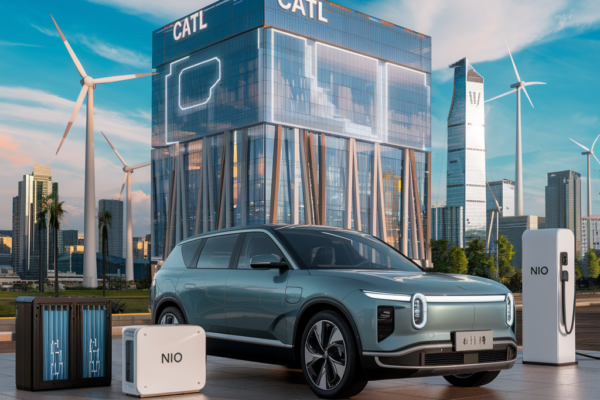In a strategic move accelerating America’s renewable energy transition, Apollo Global Management has committed up to $400 million through its managed funds to establish a joint venture with Summit Ridge Energy – marking the second major partnership between these players since 2022[1][2][3]. This transaction positions Apollo to capitalize on surging commercial solar demand while enabling Summit Ridge to expand its 2GW portfolio across seven states, with immediate focus on Illinois-based assets that will power 40,000+ homes and businesses[2][3]. The deal exemplifies how private capital is reshaping U.S. energy infrastructure, combining Apollo’s $58 billion climate investment firepower with Summit Ridge’s operational expertise to address critical grid reliability challenges[3][5].
Strategic Rationale: Building Scale in Distributed Energy Infrastructure
Apollo’s Energy Transition Thesis Gains Momentum
This transaction extends Apollo’s calculated push into middle-market energy infrastructure, building on its 2022 $175 million anchor investment in Summit Ridge[2][7]. By transitioning from passive investor to joint operator, Apollo secures exposure to predictable cash flows from commercial power purchase agreements while leveraging Summit Ridge’s development pipeline[3][5]. The structure mirrors Apollo’s playbook in other infrastructure sectors – using flexible capital to create scaled platforms in fragmented markets[8]. With $58 billion deployed across climate investments since 2020, Apollo positions this deal as critical for supporting industrial decarbonization and grid modernization[3][5].
Summit Ridge’s Growth Trajectory Accelerates
For Summit Ridge, the partnership provides low-cost capital to expand beyond its current 2GW portfolio across seven states[3][6]. The company has demonstrated consistent execution, growing from 300MW operational in 2022 to 500MW+ by 2023 through strategic acquisitions like its 100MW Virginia community solar portfolio[6][7]. This new infusion enables vertical integration – combining Summit Ridge’s development capabilities with Apollo’s balance sheet to own assets through their lifecycle[1][5]. The focus on Illinois leverages favorable policy tailwinds, including the state’s 2021 Climate & Equitable Jobs Act targeting 40% renewable energy by 2030[5][8].
Transaction Architecture: Balancing Risk & Reward
Capital Structure & Risk Mitigation
The joint venture employs a layered financing approach combining Apollo’s $400 million commitment with project-level debt[1][3]. This mirrors structures used in Apollo’s 2022 ZEN Energy deal, where $200 million combined senior debt and equity funded a 291MWh Australian battery project[4]. By concentrating initial investments in Illinois – a state with mature renewable incentives – the partners mitigate regulatory risk while targeting IRR premiums from commercial PPAs averaging 8-12% in current markets[5][8].
Synergy Realization Pathways
Key value drivers include Summit Ridge’s 18-month project development cycle (vs industry average 24+ months) and Apollo’s cost of capital advantage through its insurance-linked platforms[2][7]. The partners anticipate $25-40 million in annual operational synergies by 2027 through shared services and consolidated procurement[3][5]. Grid connectivity represents another differentiator – 78% of Summit Ridge’s pipeline interconnects to distribution networks avoiding costly transmission upgrades[6][8].
Industry Impact: Reshaping Commercial Solar Economics
Accelerating C&I Adoption
This deal arrives as commercial & industrial (C&I) solar adoption hits inflection – installations grew 34% YoY in 2024 per SEIA data[5][8]. By targeting small-to-midsize businesses through aggregated portfolios, the JV sidesteps competition for utility-scale projects while benefiting from Inflation Reduction Act tax incentives[3][6]. The model proves particularly potent in Illinois, where commercial solar adoption rates outpace residential by 3:1 due to favorable net metering policies[8].
Redefining Developer-Investor Dynamics
Apollo’s deepening engagement with Summit Ridge reflects broader private equity trends – Blackstone’s 2024 acquisition of Invenergy and KKR’s partnership with NextEra exemplify similar vertical integration strategies[5][8]. These deals enable developers to recycle capital while giving PE firms operational control over cash-generating assets. For Summit Ridge, maintaining 51% ownership in the JV preserves development upside while accessing Apollo’s institutional heft[3][5].
Leadership & Execution Challenges
Operational Integration Risks
Success hinges on merging Apollo’s financial engineering with Summit Ridge’s ground-level execution. Previous PE-developer partnerships like Stonepeak’s ZEN Energy investment demonstrate the importance of aligned incentive structures – in that case, linking management bonuses to battery storage deployment timelines[4][8]. The JV will need similar mechanisms to balance Apollo’s IRR targets with Summit Ridge’s growth ambitions[3][5].
Regulatory & Supply Chain Considerations
With 60% of solar panels still imported from Southeast Asia, the partners face ongoing Section 201 tariff risks[5][8]. However, Summit Ridge’s focus on smaller commercial arrays (typically 2-5MW) provides flexibility in component sourcing compared to utility-scale projects[6][7]. On the regulatory front, Illinois’ renewable credit program provides predictable revenue streams, though interconnection queue backlogs pose timing risks[8].
Future Implications: Blueprint for Energy Transition Finance
This transaction establishes a replicable model for deploying institutional capital into distributed energy infrastructure. As Corinne Still, Apollo Partner, notes: “Our partnership demonstrates how flexible private capital can bridge the $4 trillion gap in U.S. grid modernization spending”[3][5]. With commercial solar requiring $167 billion investment through 2030 per NREL estimates, expect more PE firms to pursue similar JV structures[8].
The Apollo-Summit Ridge blueprint also informs upcoming policy debates. By combining private investment with state-level incentives, such partnerships could accelerate progress toward federal clean energy targets without direct taxpayer funding[5][8]. However, success requires maintaining regulatory stability – a challenge given potential shifts in state renewable programs and ongoing IRS guidance on IRA tax credit transfers[6][8].
Conclusion: A New Era of Energy Infrastructure Investing
Apollo’s expanded commitment to Summit Ridge Energy underscores private capital’s critical role in America’s energy transition. By marrying financial innovation with operational expertise, this partnership addresses multiple challenges – from grid reliability to commercial decarbonization. While execution risks remain, the deal’s structure provides a template for scaling distributed energy investments nationwide. As Adam Kuehne, Summit Ridge CIO, emphasizes: “This isn’t just about building solar projects – it’s about rearchitecting how communities access clean power”[1][3]. With $58 billion already deployed across climate investments, Apollo appears poised to lead this transformation[2][3].
Sources
https://realassets.ipe.com/news/apollo-funds-to-invest-up-to-400m-in-us-solar-assets-via-summit-ridge/10130008.article, https://www.stocktitan.net/news/APO/apollo-funds-commit-up-to-400-million-for-new-commercial-solar-ck5gmjjz36gt.html, https://www.apollo.com/insights-news/pressreleases/2025/04/apollo-funds-commit-up-to-400-million-for-new-commercial-solar-partnership-with-summit-ridge-energy-3060061, https://www.azurecapital.com.au/transactions/, https://usaherald.com/apollo-invests-400m-in-summit-ridge-to-expand-u-s-solar-power/, https://www.pv-tech.org/summit-ridge-energy-acquires-100mw-community-solar-portfolio-in-virginia/, https://solarindustrymag.com/apollo-funds-makes-major-strategic-investment-in-summit-ridge-energy, https://www.law360.com/energy





